Staging
v0.5.1
v0.5.1
https://github.com/python/cpython
Tip revision: f0fa1b2f670334f9f4b123e6ecb65c3beef979ed authored by Benjamin Peterson on 20 March 2010, 20:47:27 UTC
version becomes 3.1.2
version becomes 3.1.2
Tip revision: f0fa1b2
tdemo_planet_and_moon.py
#!/usr/bin/python
""" turtle-example-suite:
tdemo_planets_and_moon.py
Gravitational system simulation using the
approximation method from Feynman-lectures,
p.9-8, using turtlegraphics.
Example: heavy central body, light planet,
very light moon!
Planet has a circular orbit, moon a stable
orbit around the planet.
You can hold the movement temporarily by pressing
the left mouse button with mouse over the
scrollbar of the canvas.
"""
from turtle import Shape, Turtle, mainloop, Vec2D as Vec
from time import sleep
G = 8
class GravSys(object):
def __init__(self):
self.planets = []
self.t = 0
self.dt = 0.01
def init(self):
for p in self.planets:
p.init()
def start(self):
for i in range(10000):
self.t += self.dt
for p in self.planets:
p.step()
class Star(Turtle):
def __init__(self, m, x, v, gravSys, shape):
Turtle.__init__(self, shape=shape)
self.penup()
self.m = m
self.setpos(x)
self.v = v
gravSys.planets.append(self)
self.gravSys = gravSys
self.resizemode("user")
self.pendown()
def init(self):
dt = self.gravSys.dt
self.a = self.acc()
self.v = self.v + 0.5*dt*self.a
def acc(self):
a = Vec(0,0)
for planet in self.gravSys.planets:
if planet != self:
v = planet.pos()-self.pos()
a += (G*planet.m/abs(v)**3)*v
return a
def step(self):
dt = self.gravSys.dt
self.setpos(self.pos() + dt*self.v)
if self.gravSys.planets.index(self) != 0:
self.setheading(self.towards(self.gravSys.planets[0]))
self.a = self.acc()
self.v = self.v + dt*self.a
## create compound yellow/blue turtleshape for planets
def main():
s = Turtle()
s.reset()
s.getscreen().tracer(0,0)
s.ht()
s.pu()
s.fd(6)
s.lt(90)
s.begin_poly()
s.circle(6, 180)
s.end_poly()
m1 = s.get_poly()
s.begin_poly()
s.circle(6,180)
s.end_poly()
m2 = s.get_poly()
planetshape = Shape("compound")
planetshape.addcomponent(m1,"orange")
planetshape.addcomponent(m2,"blue")
s.getscreen().register_shape("planet", planetshape)
s.getscreen().tracer(1,0)
## setup gravitational system
gs = GravSys()
sun = Star(1000000, Vec(0,0), Vec(0,-2.5), gs, "circle")
sun.color("yellow")
sun.shapesize(1.8)
sun.pu()
earth = Star(12500, Vec(210,0), Vec(0,195), gs, "planet")
earth.pencolor("green")
earth.shapesize(0.8)
moon = Star(1, Vec(220,0), Vec(0,295), gs, "planet")
moon.pencolor("blue")
moon.shapesize(0.5)
gs.init()
gs.start()
return "Done!"
if __name__ == '__main__':
msg = main()
print(msg)
#mainloop()

